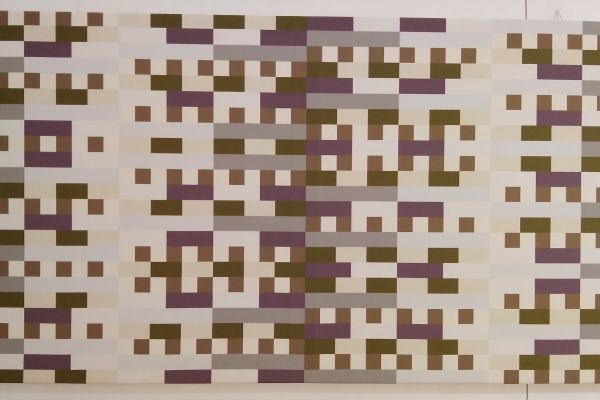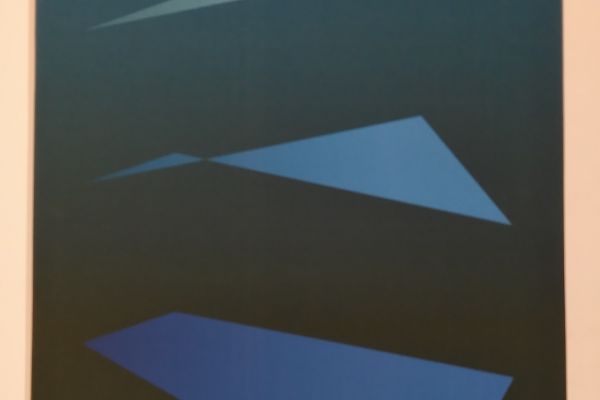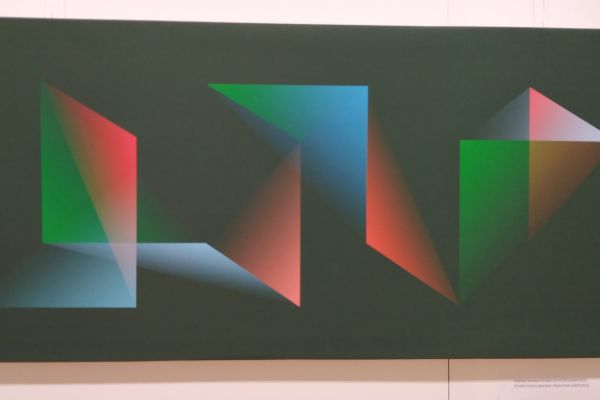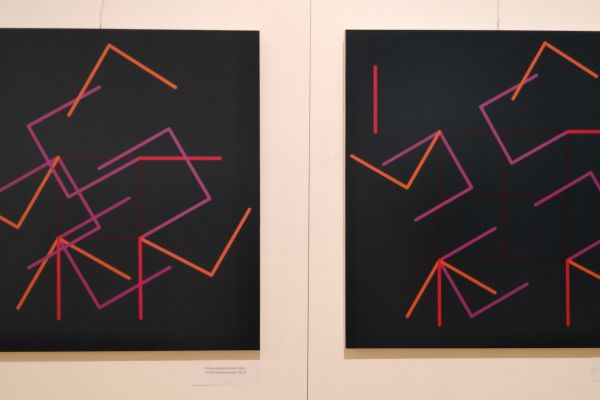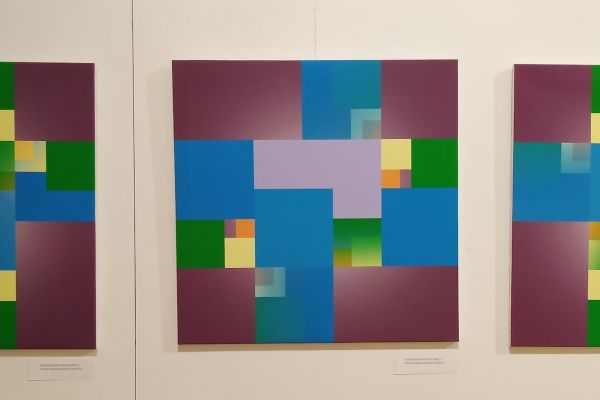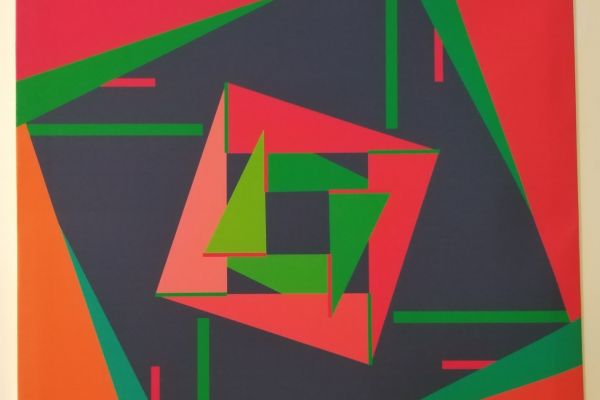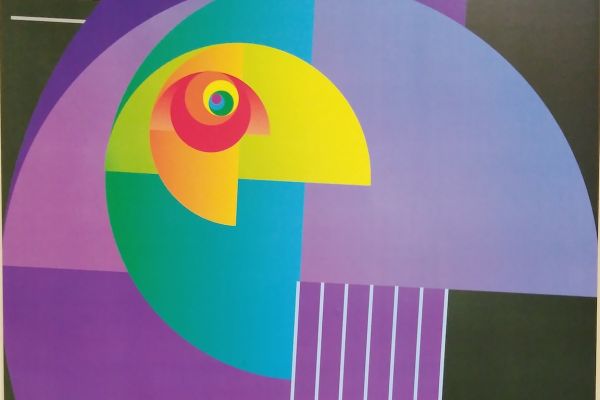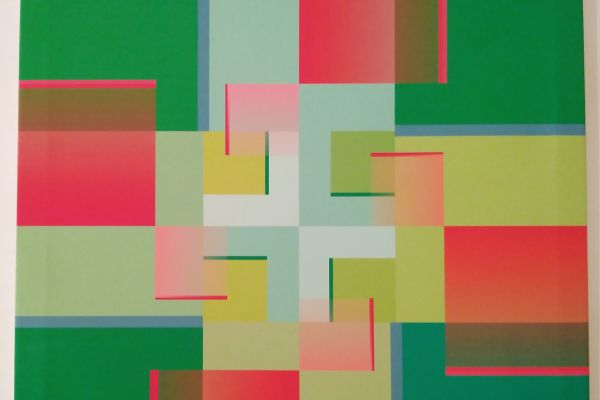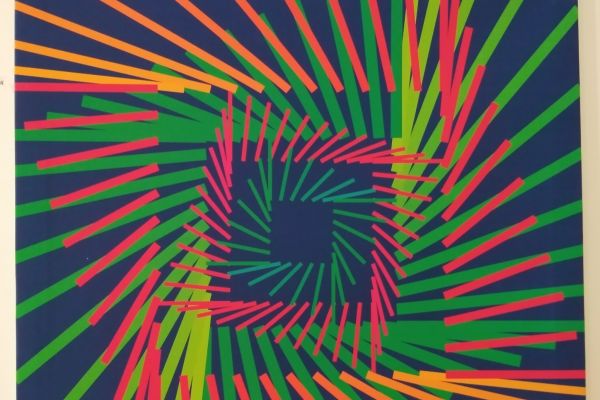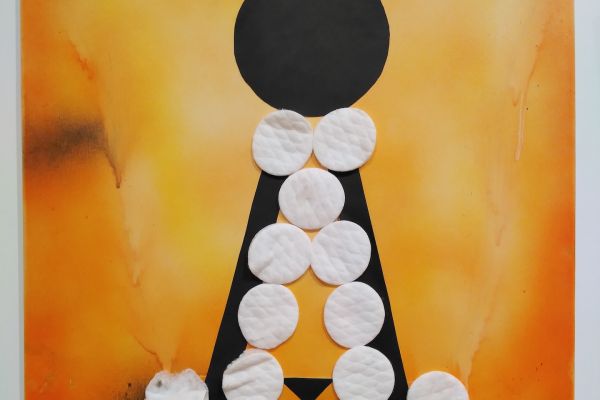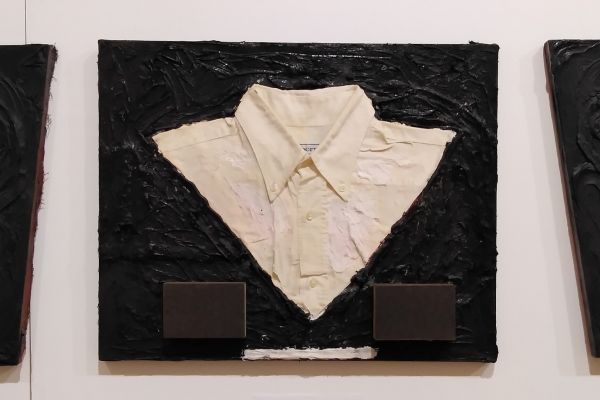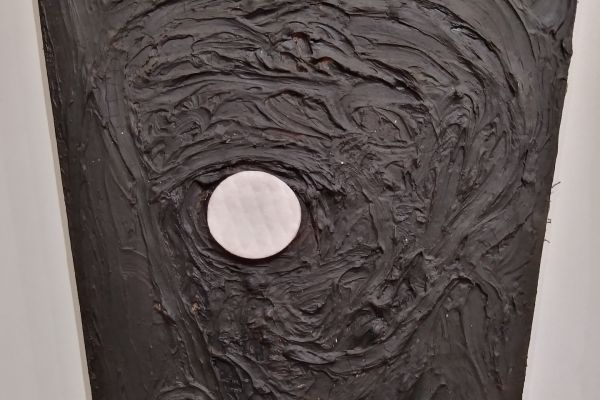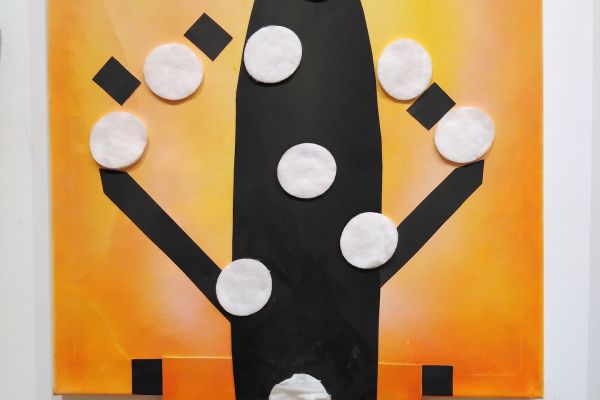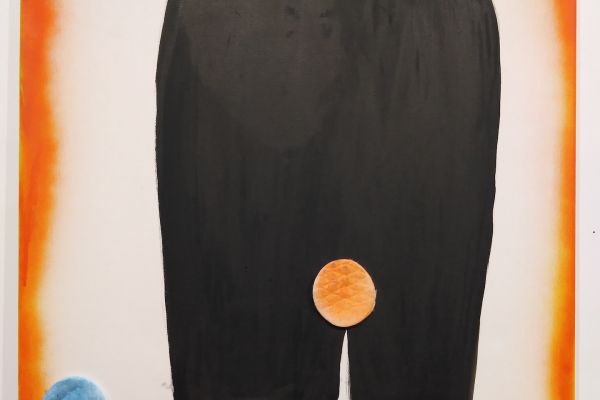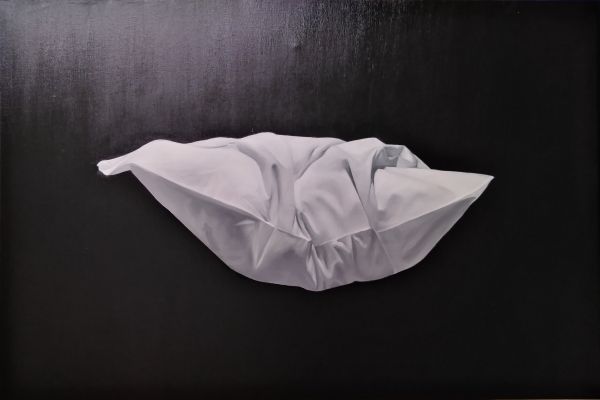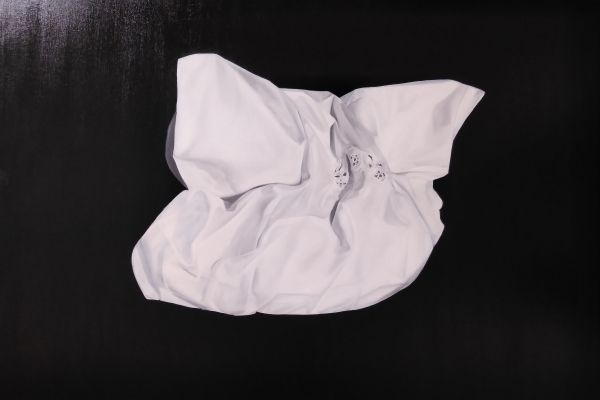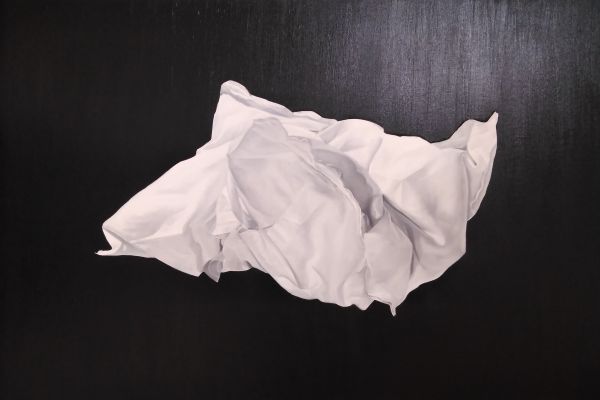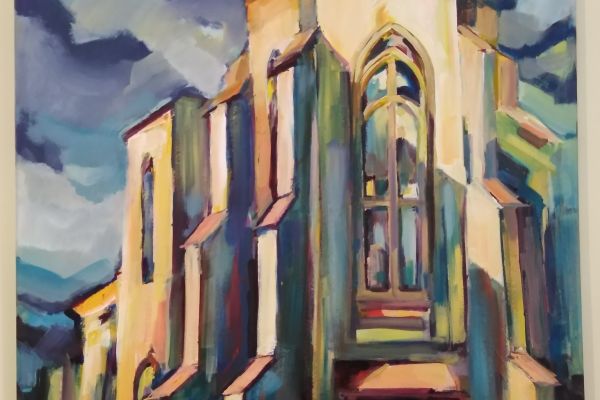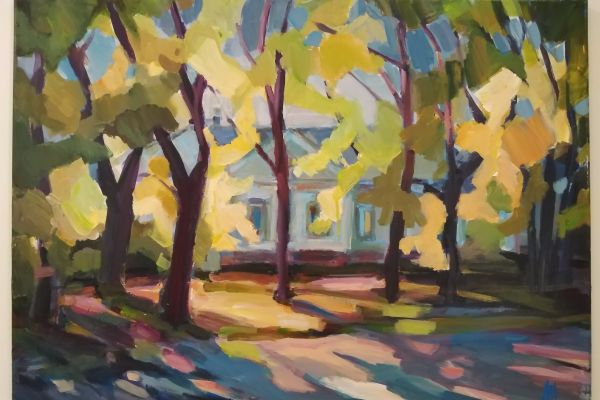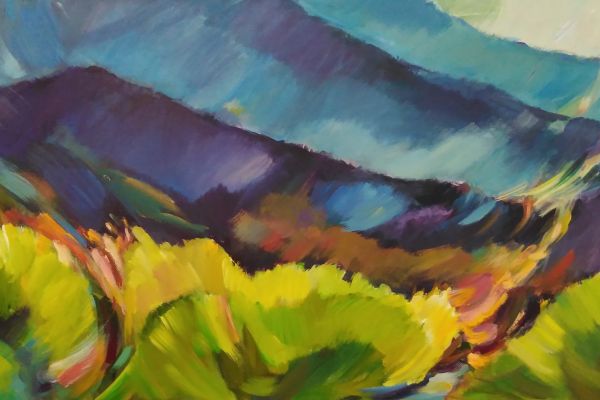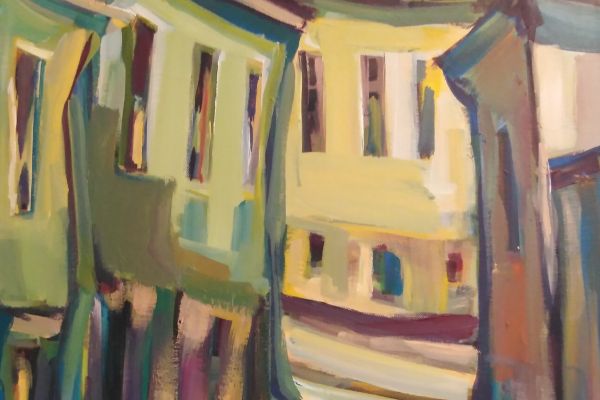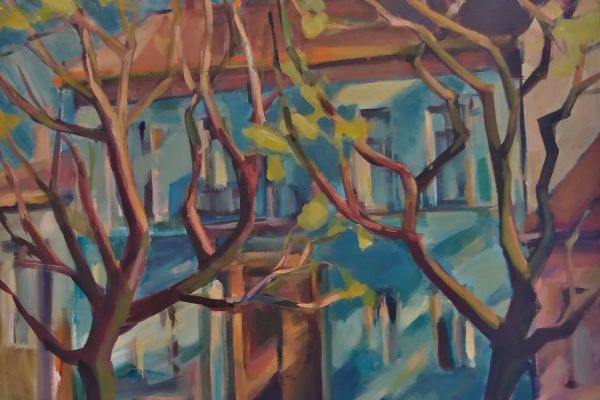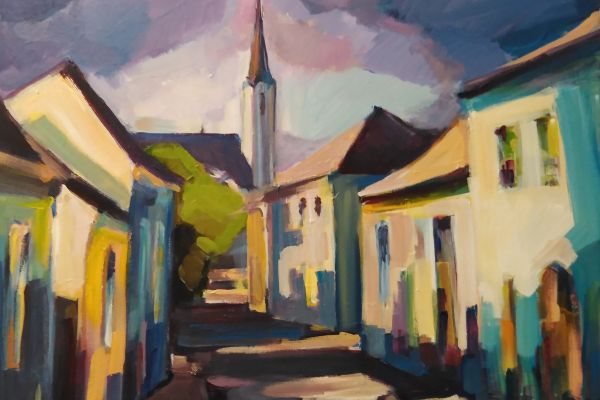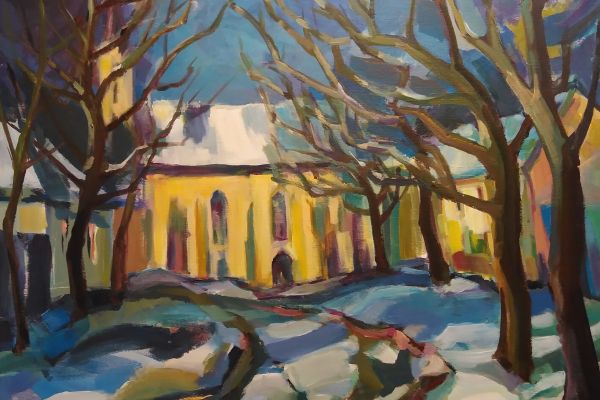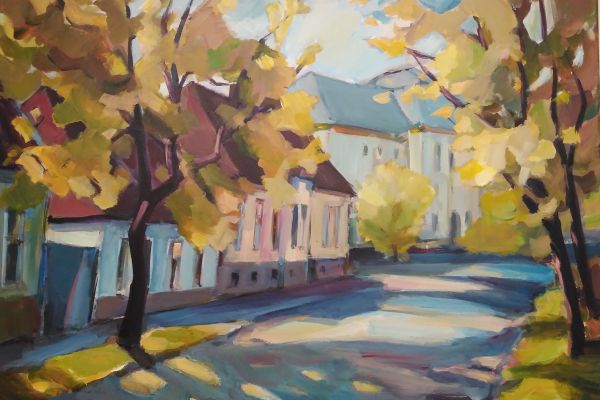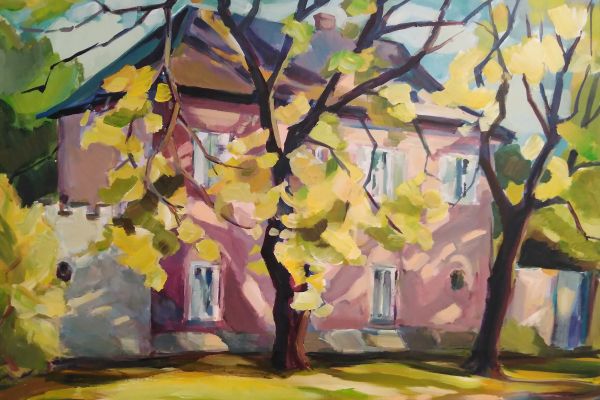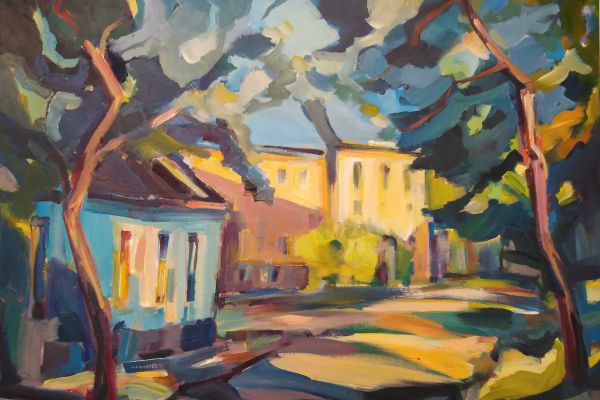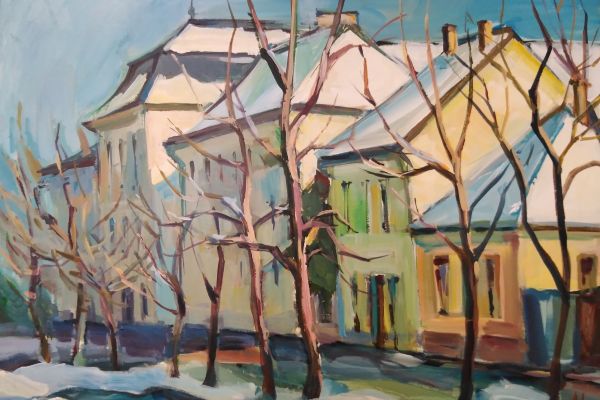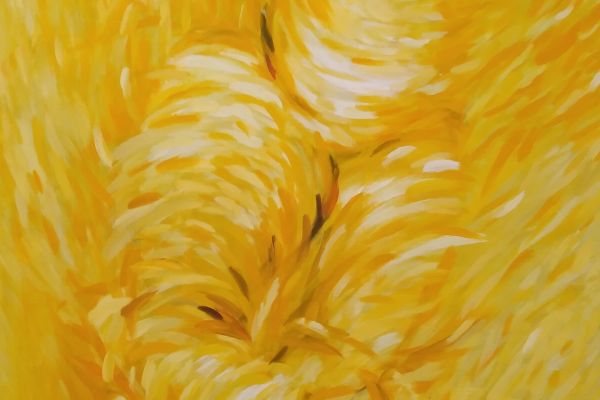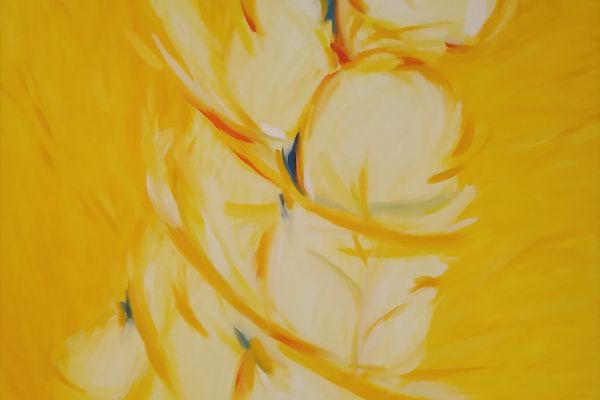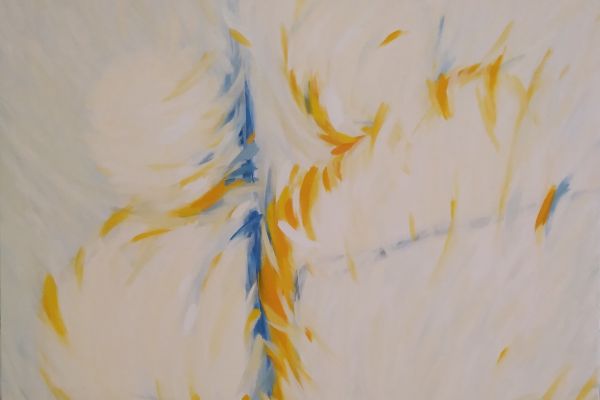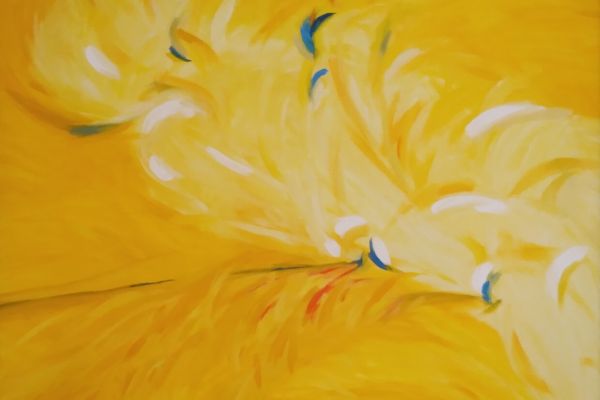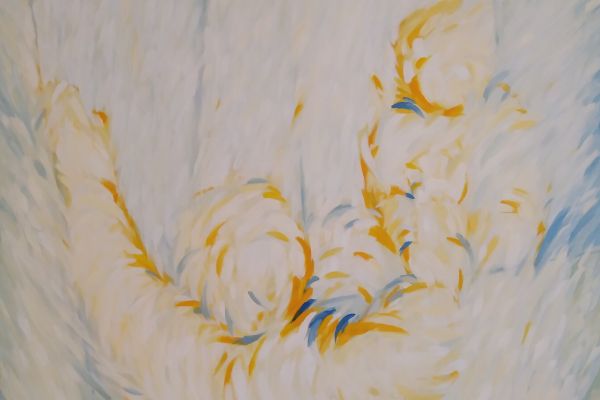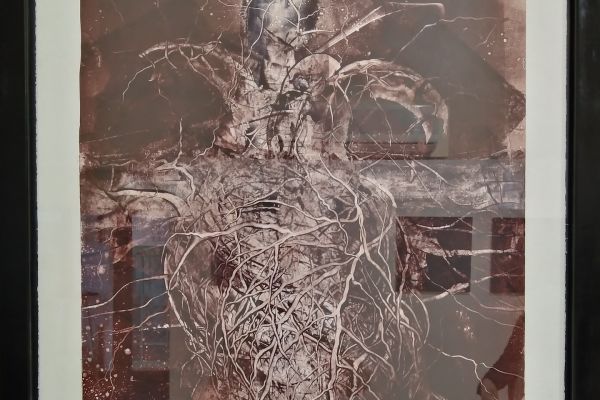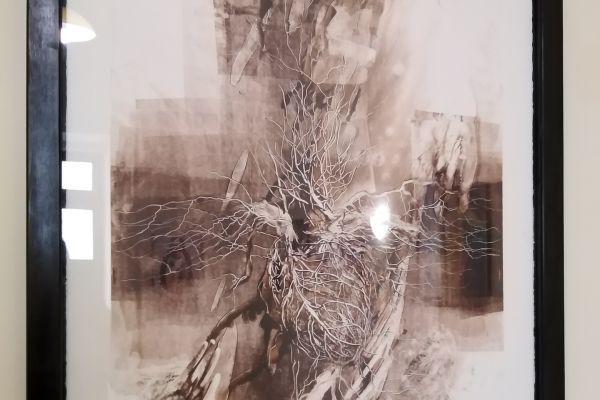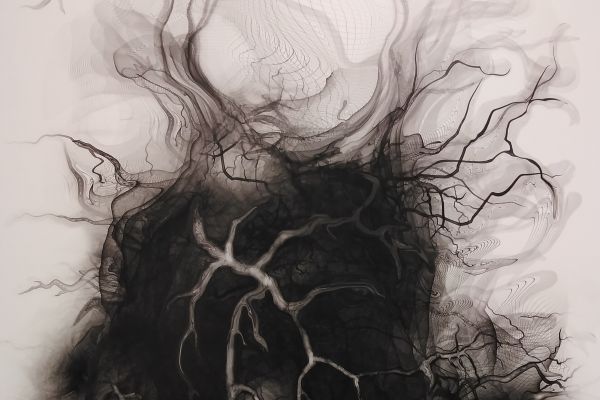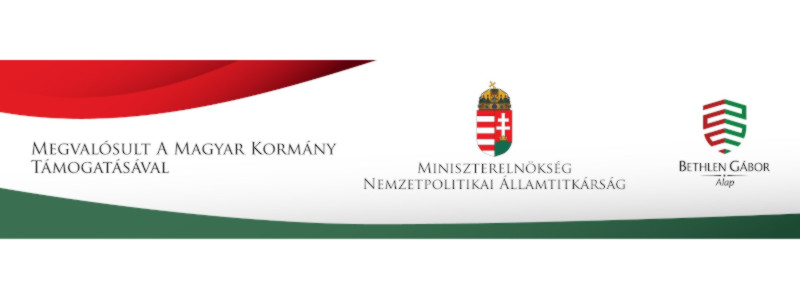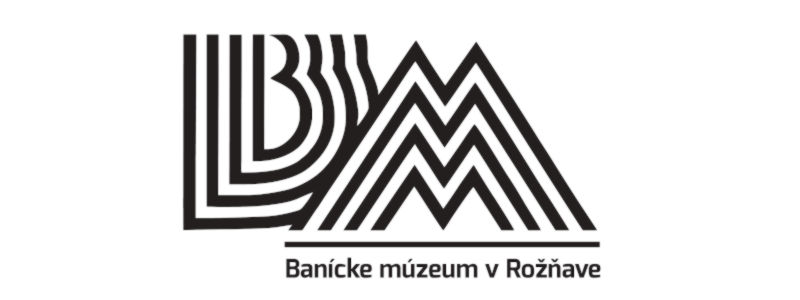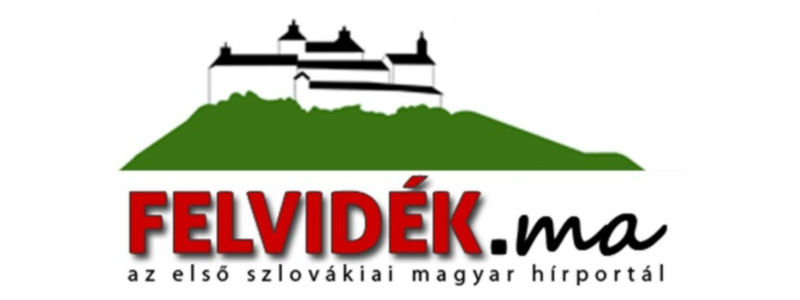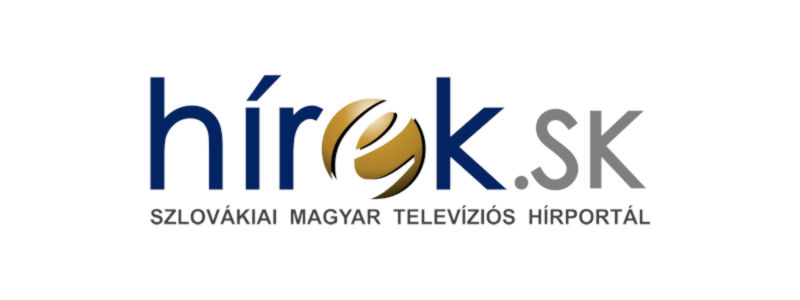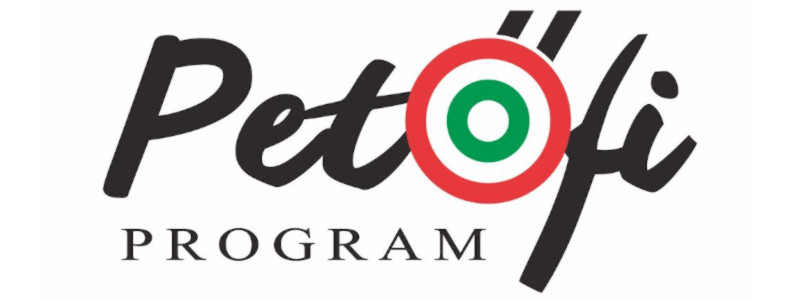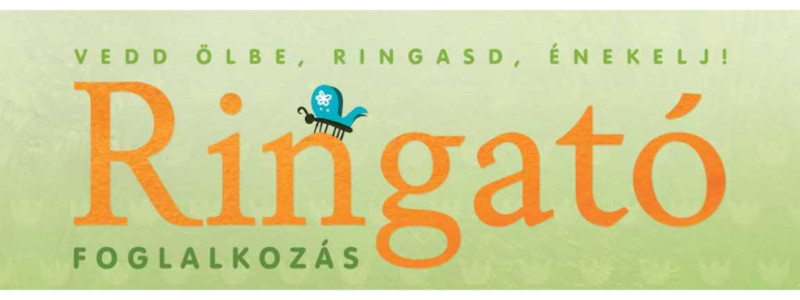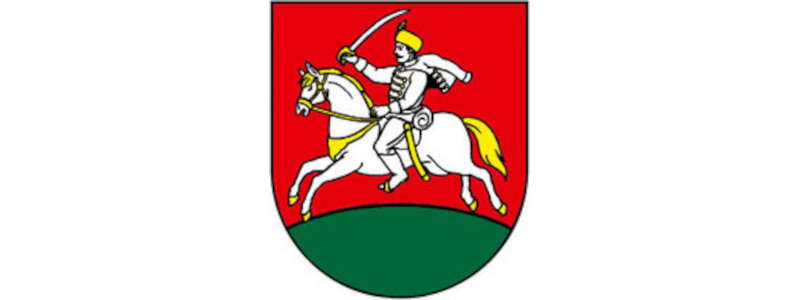Written by István Bordás
Translated by Zoltán Bartko
FiguratiF Gallery, MaJel Rovás Centre, Alžbetina 42, Košice, Slovakia
11 March 2020 - 8 April 2020
The work of the members of the group of artists entitled P’art Műhely [P’art Workshop] is connected to the city of Sárospatak, Hungary. This creative community aims to create a city-wide group of creative people, working in different genres.
People have long had the stereotype that fine art is a genre for soloists. That the creators retreat to the sacred ivory tower of art and create their great works there. Indeed, in the final phase of the creation, artists work alone. However, they have to reach that point. Transforming the idea in the creator′s head into an objectified work of art is a long process. This is true for long creative processes and also few-minutes-long artistic gestures. The process of creation does not begin with the first brushstroke placed on the canvas or when - driven by artistic intent - the etching needle touches the copper plate. It starts when the author takes the first step to learn about the different tricks of his relationship to the world and his craft. Usually, this happens in communities.
When studying art history, we can see that, apart from a few exceptional cases, authors were members of communities. They could not exist without sharing their thoughts on the world, the object of their work, the artistic processes. This necessity has always been the driving force of gathering into creative groups.
Consequently, a myriad of various short- or long-lived artistic groups emerged. Co-creation is motivated by many things. The members may group around an artistic genre or share creative modes. Obviously, also physical proximity or working together in the same settlement can be such a unifying force.
The latter is also the case of the artistic group called P’art Workshop: its members are connected to the city of Sárospatak, Hungary. This creative community aims to create a city-wide group of creative people, working in different genres. They strive to get feedback on their work from fellow artists living in a common environment, however, working in completely different genres. Therefore, the P’art Workshop is primarily an art community of continuous interaction.
Let me say a few words about the artists:
István Fazekas Balogh
He was born in 1952 in Eger, Hungary. He graduated from the Hungarian College of Fine Arts. He is a retired associate professor of the Art Department of the Comenius Faculty of Pedagogy in Sárospatak.
In his constructive electrographic works inspired by music and philosophy, he presents relations of dynamic formulae of colours and shapes, analogous to life, as well as two-dimensional representations of imaginary spatial constructions using image dramaturgy.
His works have been exhibited in ten individual and almost 120 group exhibitions in Central Europe.
He is a regular contributor to of the art magazine "Spanyolnátha" [Influenza], a founding member of the Hungarian Mail Art Society.
László feLugossy
He has been living and working in Sárospatak, Hungary as a visual artist for 21 years. In addition to the fine arts, he is also happy and active in the co-arts.
As a member of the Lajos Vajda Fine Arts Studio in Szentendre, Hungary, he participates in many national, group and individual exhibitions. In addition to this, of course, in connection with the artists of Sárospatak, he exhibited his works at many exhibitions in Hungary and abroad.
At the Sárospatak Gallery, he also participates in museum pedagogical work. He has had exhibitions at the Újbástya [New Bastion] Event Center in Sárospatak, at the Artért Gallery, the Gallery of the Comenius Faculty of Pedagogy and he often participates in the exhibitions of the Miskolc Gallery.
In 2012, he had the opportunity to exhibit his oeuvre in Modem, Debrecen, Hungary. His most recent large-scale exhibition - "Levitation" - was held in 2017. He had a joint exhibition with Imre Bukta and János Szirtes at the Művészet Malom [Art Mill] in Szentendre, Hungary.
During the time he lived in Sárospatak, he was active and prolific, as he completed and published a few artistic and literary books.
Péter Lenkey-Tóth summarized the theoretical foundations of his painting activity as follows:
Contemplative life. Existence is complete, the world is a round, closed whole. Infinity is a positive statement. Nothing is unique, only universal. Nothing finite passes, there is no shortage in infinity. This missing deficit is what I am interested in. As a painter, my intent always stems from the presence of deficit or absence of presence, so I overwrite the inner boundaries of the thing to be displayed. The everyday objects represented float weightlessly in an undefined space. This floating is the silence that can provide a basis for intensification, meditation, and self-reflection. Although there are hints, references or allusions, accurate sources and specific roots are missing. However, there is always some personality appearing in the impersonal.
Irén Molnár
She was born in 1954. She is a retired associate professor of the Comenius Faculty of Pedagogy in Sárospatak. Her works are strongly connected to Sárospatak. She conveys the human messages hidden in the houses, streets, windows in the language of painting, striving to present the beauties of the world around her, since she hopes that feeling it can encourage the viewer to recognize the good.
Zsuzsa Sándor
She unfolds her painting program from the communication gestures of people, the movement relationships of approaches and distances, capturing the internal vibrations present in the body movements. Hes figures are inscribed in space and are surrounded by the air, which shows also as a depicted material.
She is interested in human relationships in terms of painting issues, although she always starts drafting her pictures with sketches of movement and composition. She usually paints her paintings using a single hue — yellow, blue or white — and lets a few complementary colours shine in this space. To a certain extent, she finds inspiration in the memory imprints of sights, such as sitting people, tired after a train journey, people arguing with each other, or people fighting their inner struggles. However, her works are not portraits, we cannot recognize specific persons in them - she was never interested in realistic depiction. Her figures are stylised, so they cannot be called representations, but rather expressions of the sensations of physical and mental vibrations...
István Stark defines his current art as follows:
My most recent works are entitled Death Seriously.
Heidegger says death is good because it gives man the opportunity to face its finitude. This, in turn, unleashes “forces” that grab knock him out of his everyday average life.
However, facing death is a unique experience. This is when one thinks about the issue of (non-)existence. The average perception is that life is finite and that it is difficult to accept "the call" ahead of the natural end of life. I know that the situation is serious, this seriousness is reflected in images and thoughts of all kinds; however, one must not unleash the fear from death. On the contrary, it allows me to laugh in the eyes of death and create works in which I also allow myself to look back from there. Where can one start the visual processing of questions of existence and non-existence? In my case, the answer to this is the change in the attitude towards the world. I move from a natural attitude to a philosophical attitude, and here I acquire a state of consciousness that ascends above my former existence. In what I thus leave behind as a consequence of the ascension, I appear as a psycho-physical being. Looking back on oneself from this context - in which one sees everything soberly and seriously - unveils images that penetrate all of the way to one’s guts, both in a real and figurative sense. These images carry the "what we would have happened if…" anxiety, but I consider the anxiety itself as a weakness that my present existence must not recognize. The creative process always begins with a strong inner urge, a force - for me, this power to face the issue converts into inspiration. This, in turn, is already part of my everyday life and is natural, so things get simpler.
In this exhibition, the works of six artists of completely different genres and philosophical backgrounds appear. Nevertheless, somehow, this exhibition comes together as a unified whole. It presents the latest works of the six best contemporary artists of Sárospatak, Hungary. The city is duly proud of them. Please, give this exhibition a warm welcome!





